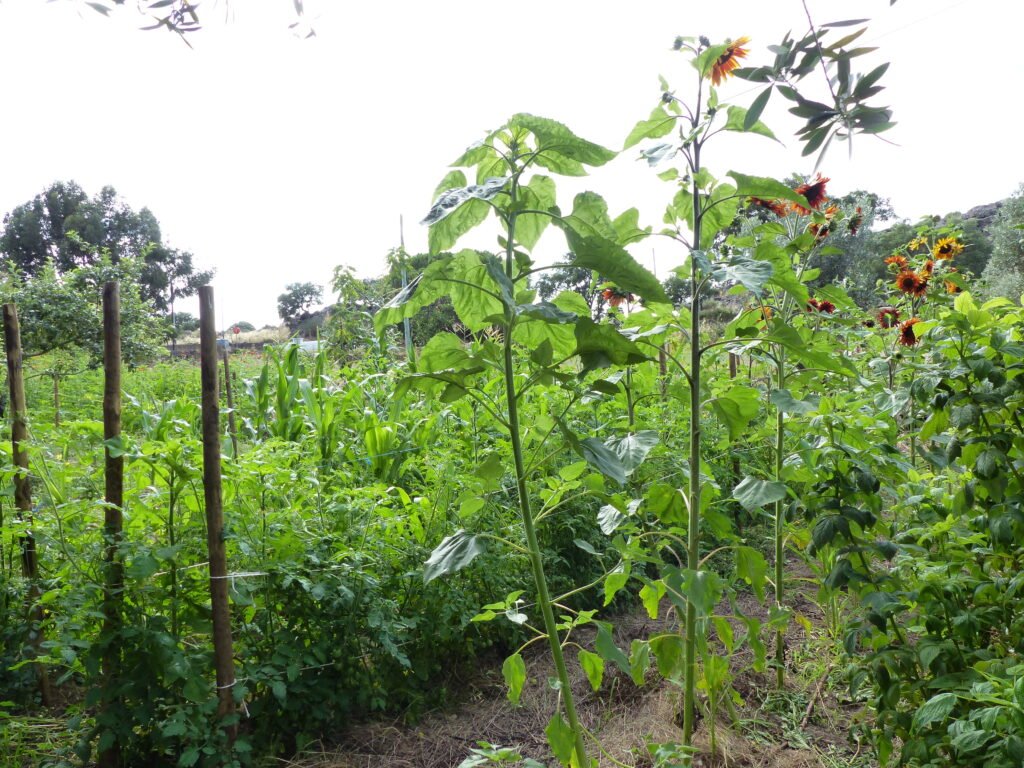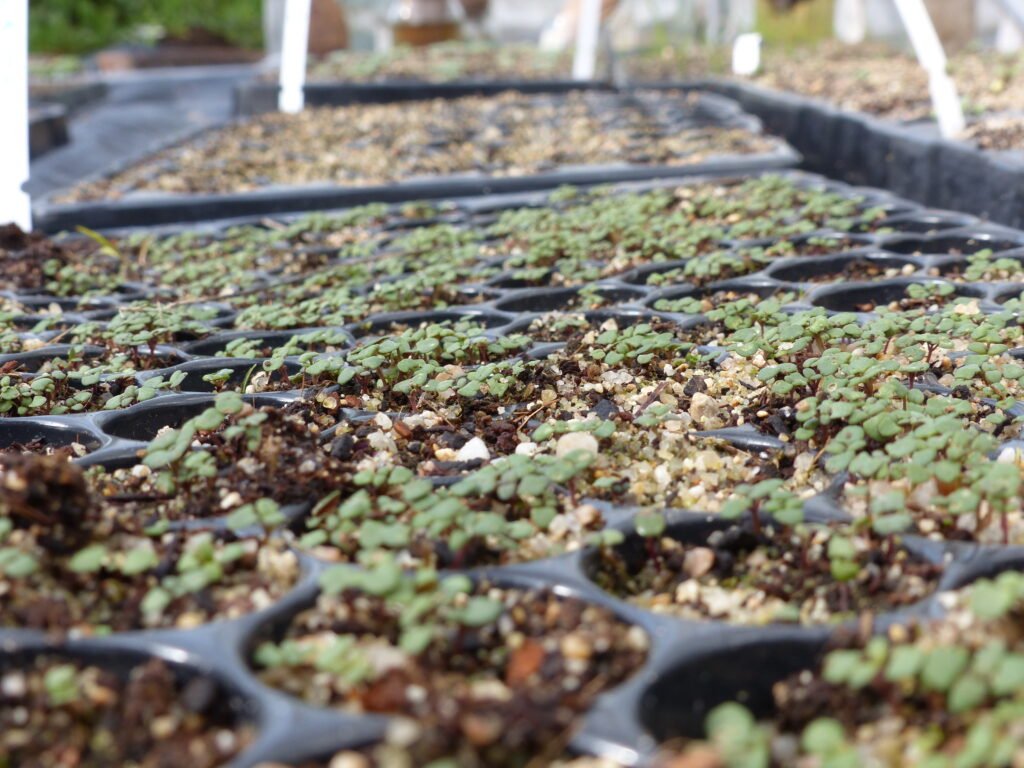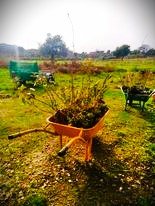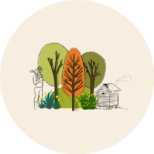Since the winter of 2020, we’ve been planting trees at the Quinta Santa Catarina. Initially with the idea of feeding ourselves. In 2022, due to the fact that we couldn’t find the trees we were looking for in this region to create an edible and medicinal forest garden, and wanting to offer a useful service to the local community, the desire turned into a need to create a nursery that would produce these plants.
In 2023, following a ReflorestarPT meeting and the growing awareness of the need to regenerate ecosystems to prevent desertification, we also specified our vision and integrated many native trees and shrubs that respond to the need to reforest to recreate microclimate zones and restore water and carbon cycles.
2020-21: some fruit trees planted
2021-22: a few more fruit trees planted, facing north-south, well spaced out to get as much sun as possible, a very Belgian reflection…

2022-23: We realise that this search for total sun exposure is not adapted to the Portuguese climate. We create highly diversified fruit hedges that produce fruit all year round, alternating genera to limit the spread of diseases, and incorporating 1 nitrogen-fixing tree for every 2 fruit trees planted. These fruit hedges are planted on level lines, and mini-swales are dug to distribute water as well as possible, as well as to limit erosion of an already very poor soil. These fruit hedges are the basis of our genetic material for the fruit tree and shrub nursery.

2023-24: Awareness of the importance of sun exposure in a continental-Mediterranean climate. Fruit trees are suffering and need to be positioned in their comfort layer, the high to medium layer, by planting shrubs and emergent trees on their south.
Test 1: densification of the space between fruit hedges according to the principles of syntropic agriculture = 300 support trees and shrubs planted + ground cover and dense annual crops of corn and giant sunflower to create biomass and shade + integration of field nursery lines in these dense areas. Learn more about the principles of syntropy here.
Test 2: design and planting of a Miyawaki Tiny Forest of +- 100m2 in zone 5 (wild zone, in permaculture) = 400 trees and shrubs planted + mulch. Find out more about the Miyawaki tiny forest here.


Test 3: shade garden – planting hundreds of sunflowers and corn to generate shade and biomass for horticultural production in 3 dimensions.




At the same time, we are developing our pot nursery, sowing native trees and medicinal plants, and field nursery, for fruit trees and support trees, in bare roots.






2024-2025 : Following feedback from the 2023-24 tests, this winter we want to continue the successful Miyawaki tiny forest adventure by – test 1) planting a second area dedicated mainly to reforestation, but testing other native species, and – test 2), planting an area that includes more edible trees among the native support trees.
We also want to develop – test 3) the vegetable garden and – test 4) the open field nursery in syntropy, alternating perennial areas of biomass-producing shrubs and shade with areas of annual vegetables.
To be continued…

